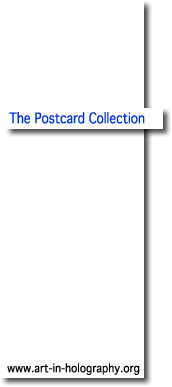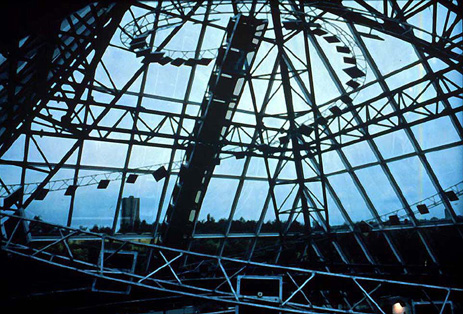

In England, the state rail system, British Rail, commissioned British artist Graham Tunnadine to produce a holographic clock for their pavilion at the Gateshead National Garden Festival. Tunnadine's massive spiral construction incorporated 132 holograms used to indicate numbers and, linked to an atomic clock and computer controlled specialist lighting, could be used to tell the time. The British Rail Pavilion was a glass construction filled with natural light, so the holograms had to be efficient enough to be seen against the ambient lighting conditions. This is a novelty, a holographic clock that actually tells the time, which attracted a great deal of attention to British Rail, holography and Tunnadine.
...This installation not only demonstrated that there is a practical aspect to holography as a visual medium, but also that holographic installations can survive in very bright lighting conditions.
Reprinted from "Beyond the Gallery Ghetto", Andrew Pepper, The Creative Holography Index, The International Catalogue for Holography, Vol. 2, No. 2, 1994, Monand Press, Bergisch Gladbach, Germany ISSN 0942-735X, Reproduced with permission.
Graham Tunnadine spoke in A Gallery Exodus, Holography in Public Spaces
132 reflection holograms and metal construction
Photo © Graham Tunnadine
